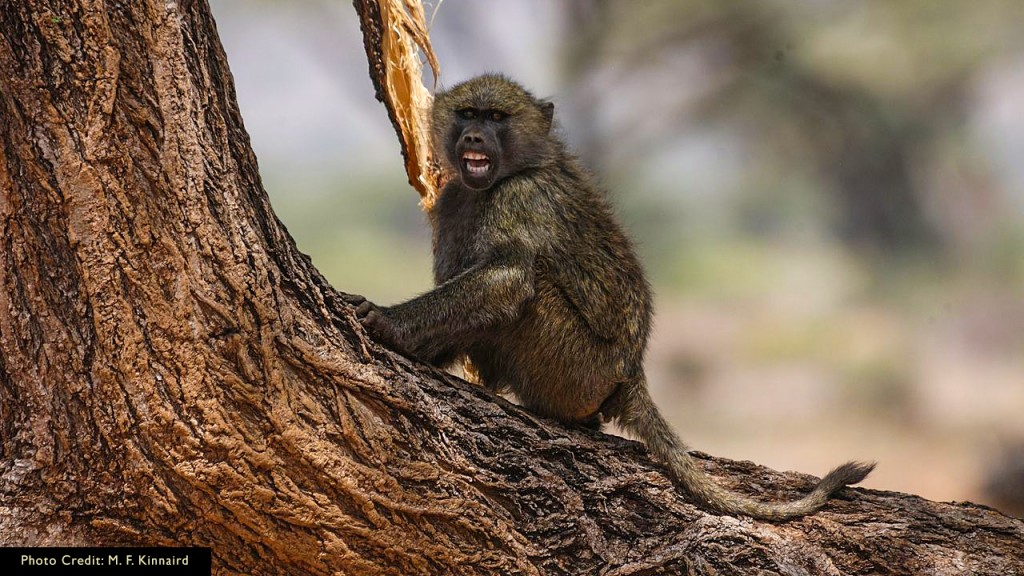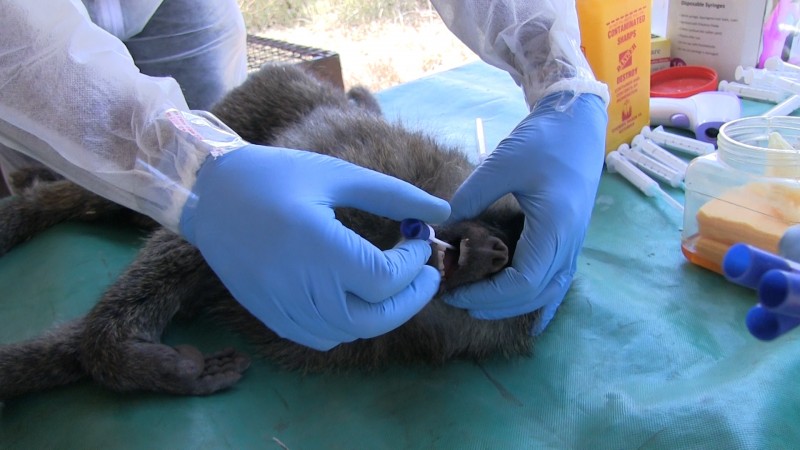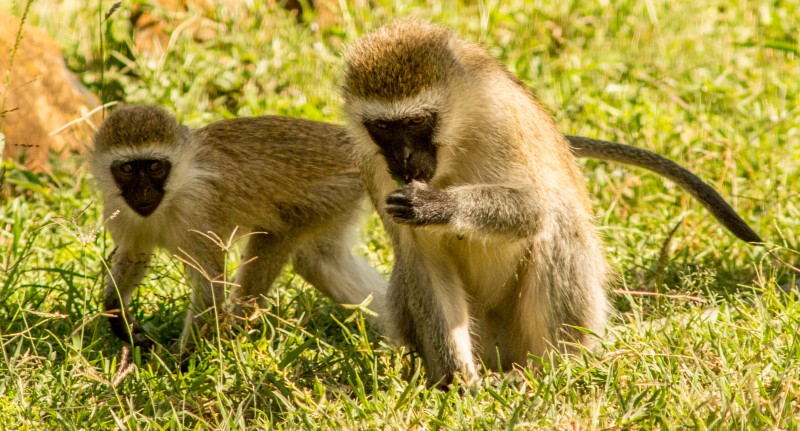In one of the most interesting sequences ever captured on Explore.org, a curious olive baboon appears to be investigating Explore.org’s broadcast equipment at Mpala’s favourite watering hole, the hippo pool. The worldwide community was treated to a close up ‘face to face’ experience with the baboons. Whenever guests take a tour of the Mpala Research Centre campus, they end up at the Mpala Live! lab where this video from the archives creates an anticipation of adventure and thrilling experiences at Mpala. It highlights the amount of fun involved in teaching conservation education for the team.
Baboons and vervet monkeys are a familiar sight here on Mpala. At the main campus office block, the kitchen and laboratory areas, vervet monkeys are never too far. The monkeys are highly adaptable primates that forage the grasslands and trees of the savanna during the day and sleep in the tops of trees at night. Some of their behaviour is so similar to that of humans that geneticists study these monkeys to learn more about human health issues like high blood pressure, anxiety, and even alcohol addiction since vervet monkeys have been observed stealing and drinking alcoholic beverages! Scientists from the zoonotic disease unit, a collaboration between Kenya’s Ministry of Agriculture, Livestock and Fisheries and the Ministry of Health are periodically on Mpala investigating primate health in a bid to prevent possible transmission of diseases such as the deadly Ebola and rabies viruses. Zoonotic diseases (also referred to as zoonoses) are infections that are naturally transmitted, either directly or indirectly, between vertebrate animals and humans.
Back at the hippo pool, viewers on Explore.org are often treated to vervet and baboon family moments including grooming and feeding. Vervet monkeys feed on leaves, flowers, fruits, seeds, invertebrates, tree gum, woody shrubs, herbs, and grasses. Vervet monkeys also eat the eggs and young of birds. Cheek pouches allow vervets to store food so they can eat it later. For baboons, dietary needs are fulfilled with just about anything edible. Although plants account for the majority of their food choices, they get their protein from eating small prey, including hares, mice, and small antelopes such as Thomson’s gazelles, and occasionally vervets.
Enjoy the hijinks of Mpala’s monkeys on the live cams.
Peace,
Victor @ MpalaLive





